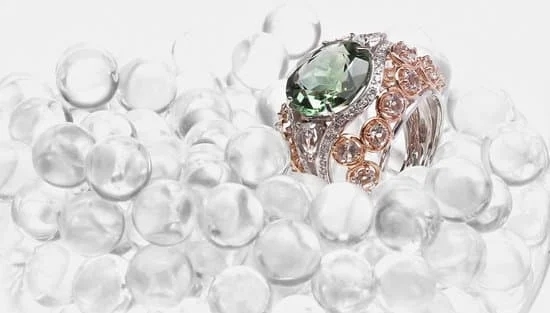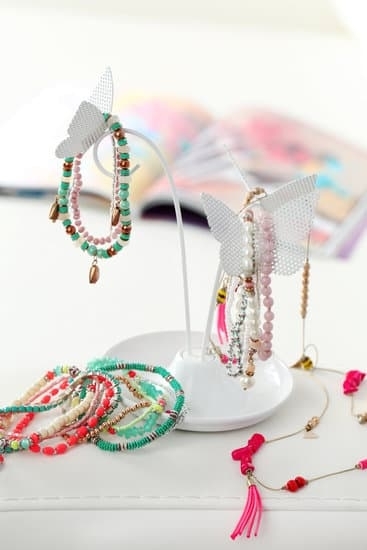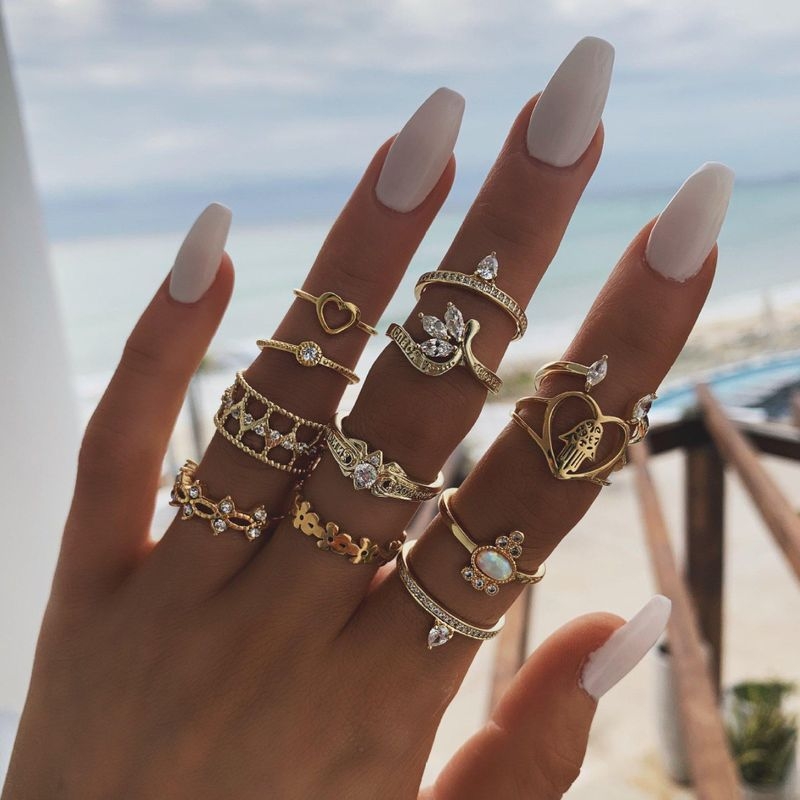The Victorian era jewelry box is an iconic representation of elegance, beauty and opulence. They were mainly crafted during the 19th century reign of Queen Victoria, one of England’s most prolific monarchs. To this day, a Victorian era jewelry box is considered to be one of the finest items you could purchase for keeping valuable jewelry safe and in style. The ornate designs encompassing these jewelry boxes make them desirable for even the most discerning collector.
Craftsmanship – Detailed artwork on Victorian Era Jewelry Boxes
Victorian era jewelry boxes have intricate details etched onto them by artisans, who carefully handcrafted them from only the highest quality materials such as ebony, mahogany, rosewood or exotic exotic woods like satinwood. Their elegant designs usually feature floral and geometric patterns that delicately intertwine throughout the entire piece.
These pieces transcend time with their intricate engravings of 18-karat gold leaf and mother-of-pearl pavements, giving them a unique charm that other enclosure pieces don’t possess. Furthermore, many collectors appreciate the hand-sewn linings often found inside these beautiful pieces adding a special layer to the sophistication they represent.
Special Features – Unique features within Victorian Era Jewelry Boxes
In addition to being aesthetic showpieces, there’s no denying the functional aspect to these extraordinary antique furniture pieces; they are great storage solutions as well. One unique feature many collectors look out for are removable drawers where additional pieces can be stored away safely; it is common to find compartments manually created for different types of jewels such as necklaces and bracelets each accompanied by its own manufactured duster and quilted cushioning.
Apart from this, secret compartments are often seen in designs from master craftsman who create slots specifically designed so part of the item can fold back revealing another part of it within or behind components like drawers or panels.
Popular Materials Used in Making Jewelry Boxes
The Victorian era was a time of luxury, extravagance, and romance – all traits that are reflected in the jewelry boxes from this period. Jewelry boxes from the Victorian era were small, ornate pieces of woodwork often made with rare or exotic woods. They featured intricate marquetry patterns inlaid with mother-of-pearl, tortoiseshell, mahogany, ebony and rosewood.
These decorative designs added to the overall beauty and charm of each unique box. On various models, hinges were made with brass or silver plating and etching while drawers were lined with velvet or silk fabric.
Most materials used to make jewelry boxes during the Victorian era had practical purposes but also complemented the romantic atmosphere of the time period. Each material had its own special properties which allowed it to be molded into any interesting shape or form. Woods such as rosewood, mahogany and ebony were not only aesthetically pleasing but also durable; rosewood is one of the most well known hardwoods used for making furniture throughout history due to its strength and longevity.
Mother-of-pearl has a beautiful iridescent surface that was often affixed onto box lids to add extra sparkle and shine; it’s been used since ancient times for decorating musical instruments, furniture scales and even eyeglasses. Silver plating was commonly used as both a decorative accent on hinges, handles pull-rings or latches but also served as protection against tarnish and deterioration over time.
Drawer lining fabrics such as silk or velvet provided an extra layer of protection against dust or dirt getting into the drawers themselves. It was important that fabrics were able to be easily cleaned in order to keep them looking fresh; velvet fabrics would have been preferred due to their ability to absorb moisture quicker than other materials while maintaining a luxurious sheen when properly cared for.
All these elements worked together harmoniously to create one stunning piece of craftsmanship worthy of being passed down through generations as both an heirloom piece as well as a functional storage unit.
How Different Social Classes Adopted Different Jewelry Box Styles
The Victorian era was a period of great distinction between the different social classes. Not only did people dress differently to reflect their respective class, but they also incorporated different materials and objects into their homes as a reflection of their status. Jewelry boxes were no exception.
The upper class, consisting of the wealthy and elite, typically had jewelry boxes crafted from expensive materials like stained woods, carved ivory, silver and gold. This made it much easier for them to showcase their wealth and social rank. These boxes often came with intricate and elegant designs featuring images inspired by nature or abstract art – such as flowers, birds or abstract shapes. The aristocrats used these boxes to store their luxurious jewels in style and grandeur.
The middle class, on the other hand, was not able to afford such expensive pieces so they turned to cheaper materials like cardboard, paper mache and plastic. This allowed them to still have nice looking jewelry boxes without having to pay extravagant prices.
Their jewelry boxes featured simpler designs than those of the upper class but still had more ornate details compared to lower class pieces that featured basic geometric shapes or just plain wood with subtle embellishments here and there.
Finally, members of the working-class usually could not afford even basic jewelry boxes so had simple wooden ones which were very functional but lacked any sort of refinement or decoration other than simple carvings or stone adornments here and there. Those who were unable to obtain even that resorted to buying secondhand pieces which may have been damaged or worn down drastically reducing its overall appearance or value.
Unique Designs, Colors, and Adornments of Jewelry Boxes
The Victorian era was renowned for its beauty, extravagance and artistry. Jewelry boxes from this period were no exception. As the 19th century brought about many changes to the production of furniture and decorative items, so did it bring about a new focus on jewelry boxes. Finely crafted from luxurious materials such as rosewood, mahogany and walnut, each box featured unique designs, colors and adornments that signaled sophistication and sophistication was an absolute must-have during the Victorian Era.
In a world where technology was limited in comparison to what we have today, many pieces of furniture required manual labor to complete. It involved having skilled workers craft ornate carving techniques which many critics believe captured this period like no other could have done. As wooden inlays and intricate veneers became more popular among the aristocracy who sought out these treasures around Europe, they had never seen anything quite like it before.
Many such boxes included exquisite mosaic tile patterns made by hand with pearl shells or gems. Mounted cabochons and semi-precious stones were also set onto jewellery boxes as special accents for added glamour.
These vintage jewelry boxes provided a special place for precious possessions of generations before us to be kept safe from damage or theft, but also gave off an aura of luxury that was very much in fashion during this time period.
Traditional shapes such as oval or rectangular can still be seen in antique Victorian jewelry boxes just like how these decorations are still used today on modern versions with some revised modern sophistication than those produced back then – though timeless design styles still remain.
Symbology and Ciphers Engraved on Jewelry Boxes
The Victorian era was one of the most artistically decorated time periods with intricate and delicate jewelry pieces being crafted in abundance. This, like many aspects of their culture, was symbolic and all encompassing of a given situation.
One main detail that signifies this symbolism is the engraving on jewelry boxes that were crafted during this time. The presence and origin of such symbols vary greatly as they often relate to a much broader set of things than just the box itself.
Most commonly, these jewel boxes have ciphers or symbols inscribed into them which appear to have various meanings related back to the wearer or the item within it. In some instances, these bas-reliefs can represent immortality and eternity with endless spirals or wreaths to symbolize everlasting and constant positive change in one’s life. These depictions are sometimes composed of intertwined animals or flowers with vignettes demonstrating serenity, power and comfort – key components for wearing meaningful jewelry.
Apart from infinity symbolized engravings found on Victorian boxes, words seem to feature prominently as well. Depending on the context within which the words are used, it could be an artistic representation of love letters sent across continents or even famous passages from occultic books signalling higher knowledge beyond human understanding.
Jewelry boxes bearing such delicately inscribed words became popular novelties known by those closest to the wearer – embellishments serving not only as spiritual reassurance but also as conversation starters forging deep connections between friends and families in this era-of-opulence.
Design Variations and Influences Over the Years
The Victorian Era jewelry box has a long and storied history, particularly in Europe. Jewelry boxes originated in European courtiers during the Renaissance era, with notable examples being made of silver-gilt or ebony wood. During the Georgian era (1714-1830), intriguing shapes that came out of Asia and India made their way into British homes and Royal courts, which added a profound variety to the prevailing style of box making.
The Victorian Era (1837-1901) is when jewelry boxes began to really take off as entities of their own; they were adapted to house more intricate pieces created with gems or precious materials, such as coral and enameled gold. Boxes during this period were most commonly made from rosewood, walnut or mahogany with smaller pieces featuring mother-of-pearl inlay work along with other decorative detailing typical of the era like gilt designs and carvings of birds or flowers.
These boxes weren’t just status symbols but also served functional purposes for storing precious keepsakes in an exquisite manner along with special antiquities that required credible habitats for safekeeping.
Today’s modern iteration is not exactly the same as its precursor but there are still some Victorian design elements represented in many antique jewelry boxes up for sale around the world. Whimsical metalwork stands out over lacquered wood finishes, along with crystal bee pins on contemporary ear rings cases are seen often these days paying homage to past generations commitment to detail and craftsmanship within their pieces.
Maker and Craftsman Marks on Jewelry Boxes
Jewelry boxes from the Victorian era are treasured collectibles, with beautiful box designs featuring intricate craftsmanship and detailing. But modern day jewelers and collectors understand that the true value of a jewelry box can be discovered beyond its beauty through maker and craftsman marks.
Makers marks were found on the top or bottom of pieces, with craftsmen’s marks usually creating a personal touch through initials or names. Maker’s and craftsmen’s marks on jewelry boxes offer an insight into the artisans who created them, giving information about the country, region, shop and even artisan himself. Knowing this information can help in authentication for antiques and collections alike.
The study of makers’ marks (or hallmarks) is known as “post-medieval archaeology” which focuses on items from 1600-1900. For example, if a Victorian era jewelry box has “JR&S” engraved onto its surface that could indicate it was produced by James Robinson & Sons Art Metal Workers of Birmingham. Similarly, looking up “JW&Co” could point to John Walton & Co., a silversmith in London during that time period.
Post-medieval archaeology is an essential part of authentication as tools such as microscopes or handheld loupes offer extended insights into age and craftsmanship markings such as date letters found on objects like jewelry boxes produced during the Victorian Era. Knowing this can greatly affect resale values for antique vintage jewelers due to an increase in authenticity assurance which may bring higher prices among collectors or restorers alike.
Attentive inspection of these gemstones might also prove worthwhile in identifying previously undiscovered makers or craftsmen whose unique styles plied during that period in history further nourishing one’s understanding about their historical significance.
Restoration and Repair of Jewelry Boxes from the Victorian Era
With the steady rise of antique collecting, the desire to restore and repair items from the Victorian Era is at an all-time high. One of the most popular pieces from this period, not just in terms of popularity, but also in terms of value, is the jewelry box. These boxes come in a varietyof styles, some highly ornamental with filigree and scrollwork.
Others are wooden pieces with luxurious velvet linings on the inside. Regardless of style, Victorian Era jewelry boxes can be extremely valuable and should be restored properly.
One key step when restoring a jewelry box from this era is proper identification as to its origin and type. This can often involve research into what kind or style of box was produced during this period as well as identifying officials makers or manufacturers who would likely have made it. Properly dating a piece such as this can help to determine how best to proceed with restoration.
Once identified, one should assess the necessary repairs that need to take place before going ahead with any kind of cleaning or polishing processs. Many Victorian jewelry boxes require significant repairs in order to bring them back to working order; for example if there are hinges that need replacing due to rust or decay then that should be taken care of through professional repair work before proceeding.
In addition, checking for missing hardware such as locks/keys and clasps should also take place before polishing begins so that replacement parts can be ordered if required.
As part of a museum collection or for personal use, bringing these precious pieces back to their former glory requires carefully consideration & expert judgement. With respect Rely Restoration has been providing these services for over 30 years – giving clients piece at mind while they restore such treasured antiques back to their formers beauty & unique character. It’s always rewarding when we hear our customers say “It looks like it’s brand new.”.
Values and Prices of Jewelry Boxes from the Victorian Era
Jewelry boxes from the Victorian era are prized items for collectors of antiques. They are in demand because of their intricate details, crafted in luxurious materials like velvet and mother-of-pearl, as well as their representational art – often detailed engravings or images along the rim or top of the box.
These boxes were a trendy accessory during Queen Victoria’s reign and her subjects began buying them in increasing numbers. Over time, they have become increasingly popular additions to collections of antiques.
The types of jewelry boxes produced during this period vary drastically as it encompassed a variety of styles designed according to a person’s taste. Many utilized brass and ceramic handles with decorative carvings which often had personal meaningful symbolism such as flowers, birds, lovebirds or even animals. They were available in different woods ranging from mahogany to walnut, each providing its own unique look and feel.
For example, mahogany was more often used for more expensive pieces while walnut was cheaper and used for simpler designs. However both woods provided an air of sophistication regardless of cost when it came to presentation.
The prices for jewelry boxes from this period also vary greatly depending on their make, condition, age and level of intricacy or rarity which all are indicators’ on where they may be placed within the hierarchy of antique items. Rarer pieces that contain elements including glass or paint can fetch reasonably high prices whereas simple pieces cost between £20-150 per box with the price rising if they come in sets or with accompanying key(s).
Similarly any engravings that adorn the outside grant it with added value depending on what is present such as initials and dates that hint at providence etcetera.
To determine value today one must consider not just condition but also how many similar items currently exist – with vintage items being far much lower due to degradation over time (yet more likely to carry added historical import). Further factors may include the place bought from; larger auction houses can bring higher prices than private sales, yard sales or shops though a trusted dealer is always conductive to seeking advice prior to purchasing any item related to antiques.
Thereforevictorian era jewelry boxesoffer potential investors/collectors valuable opportunities when it comes to selecting individual pieces for public displayor private collection management – dependent largely upon age assessment/verification procedures being properly carried out prior to purchase conclusion.

Welcome to my jewelry blog! My name is Sarah and I am the owner of this blog.
I love making jewelry and sharing my creations with others.
So whether you’re someone who loves wearing jewelry yourself or simply enjoys learning about it, be sure to check out my blog for insightful posts on everything related to this exciting topic!





